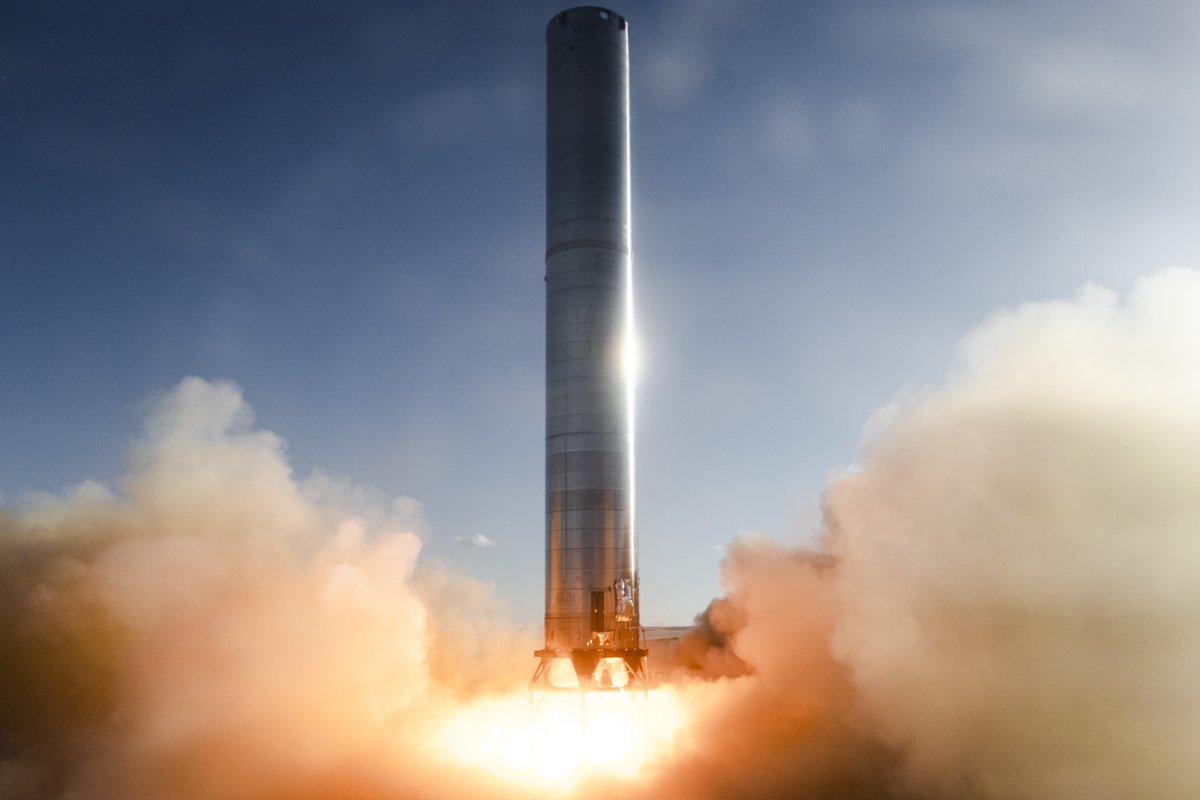SpaceX is putting its first flight-ready Super Heavy rocket through its paces.

Thursday, December 23, 2021 | Chimniii Desk
Key Highlights
SpaceX has officially begun the process of testing what CEO Elon Musk claims is still the first flightworthy Super Heavy booster, more than three months after the building-sized Starship booster's most recent return to Starbase's orbital launch site.
SpaceX began filling Super Heavy Booster 4 (B4) with liquid nitrogen — supplied by the first orbital-class Starship flight – for the first time on December 17th, after completing a number of pad tests in the days prior. It's unknown what happened during the test, but whatever happened, the test and the survival of B4 were a major, long-awaited achievement for both the Starship booster and the orbital launch site (OLS).
Advertisement
At this point, the general consensus among close observers of SpaceX's Starship programme is that the company's unprecedented delay in completing Booster 4's first test was caused not by the rocket itself, but rather by the fact that the orbital launch site required to fully test it had not yet been completed.
While it was SpaceX's decision not to conduct preliminary testing with B4 at one of the site's two suborbital test and launch mounts, it's clear that the company ultimately decided that Super Heavy Booster 3's successful July 2021 tests – which included a cryogenic proof nearly identical to Booster 4's first test – rendered such testing unnecessary.
To put it another way, SpaceX must be confident enough in the quality of the first few Super Heavies rolling out of its Starbase factory that it doesn't need to test the structural integrity of the first truly completed Super Heavy booster before putting the one and only orbital Starship launch site in the line of fire. Regardless, based on the results of Super Heavy Booster 4's first cryogenic proof test, SpaceX's assumptions appear to be valid.
Advertisement
SpaceX sent Super Heavy B4 through a cryogenic proof test on December 17th that was almost twice as ambitious as B3's, filling the booster approximately a sixth of the way with a few hundred tonnes of liquid nitrogen (LN2). It's unclear whether the booster's propellant tanks were also elevated to flight pressures during the test (6-8 bar or 90-115 psi). If Booster 4 was able to attain those pressures, the test would be much more crucial, as it would demonstrate that the rocket is ready to fly.
SpaceX conducted a similar series of cryogenic experiments on December 21st, partially filling Booster 4 with around the same amount of liquid nitrogen for the second or third time in a row. Again, the Super Heavy made it through the several-hour experience unscathed. Still, SpaceX and Super Heavy B4 must pass a number of other tests, some of which are considerably more critical.
Advertisement
The most evident is that SpaceX needs to fill a Super Heavy rocket to capacity for the first time. Booster 4 will most likely be filled with roughly 2500 tonnes (5.5M lb) of liquid nitrogen (LN2) — about two-thirds full, depending on the storage condition. SpaceX may fully load Booster 4 with about 3500 tonnes (7.7 million lb) of nitrogen by temporarily filling one of the orbital tank farm's liquid oxygen (LOx) or methane (LCH4) tanks with nitrogen.
That's nearly the same weight as the propellant (3400t/7.5M lb) Super Heavy is designed to lift off with, according to SpaceX's own website. If the full cryoproof goes well, SpaceX will likely do one or more wet dress rehearsals before filling Booster 4 with about 2900 tonnes (6.4 million pounds) of cryogenic oxygen and 500 tonnes (1.1 million pounds) of cryogenic methane.
Advertisement
Finally, SpaceX will most likely begin static fire testing by lighting one or a couple of Super Heavy's many engines. That approach might eventually result in the ignition of all 29 Raptors on Booster 4, providing a thrust of over 5400 tonnes (11.9 million lbf) — 50 percent more powerful than NASA's decommissioned Saturn V Moon rocket.
Despite a number of recent indicators and reports to the contrary, Elon Musk claims that SpaceX still expects to fly Booster 4 and Ship 20 on Starship's maiden orbital-velocity launch attempt, thus the scope and complexity of testing is only expected to expand in the coming weeks.
Advertisement